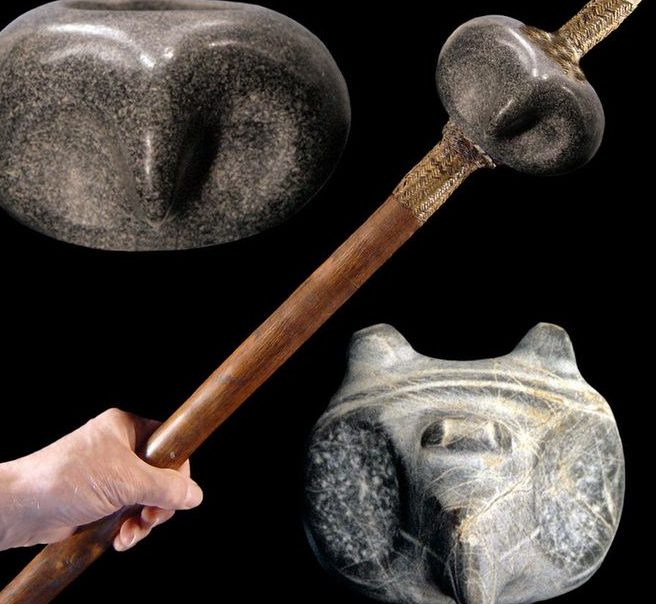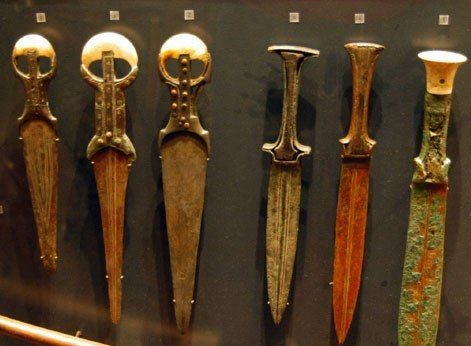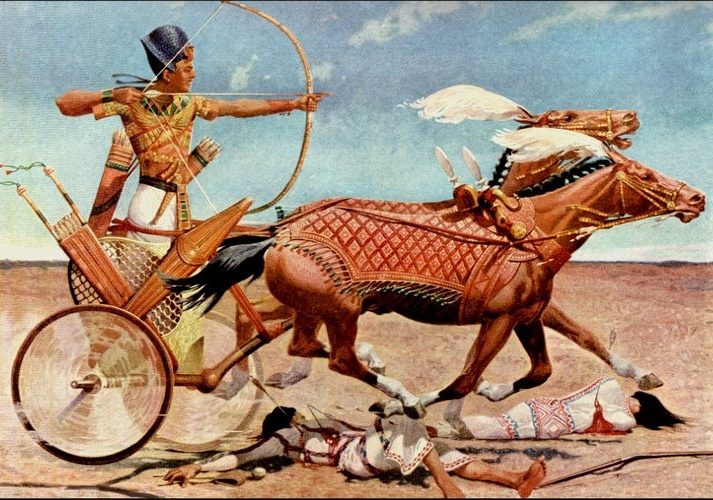The Art of War in Ancient Egypt: From Early Tools to Advanced Weapons
Ancient Egypt, one of the most influential civilizations in history, is often celebrated for its monumental architecture, intricate art, and profound contributions to science and mathematics. However, the weapons of ancient Egypt played a crucial role in shaping its history and securing its prominence in the ancient world. These weapons were not merely tools of warfare but also symbols of power and status, reflecting the evolution of military technology and strategy over millennia.
Early Weapons: Stone, Wood, and Copper

In the predynastic and early dynastic periods (circa 3100–2686 BCE), the weaponry of ancient Egypt was rudimentary but effective. Early Egyptians relied on stone, wood, and copper to craft their weapons. The mace, one of the earliest forms of weaponry, was designed primarily for bludgeoning. Its head, typically made of stone or copper, could deliver devastating blows in close combat. Maces were also ceremonial items, often depicted in the hands of gods and rulers, symbolizing divine authority and kingship.
Spears were another significant weapon during this period. With wooden shafts and tips made from flint or early copper, spears served both as hunting tools and as weapons in battle. The spear’s length allowed warriors to strike from a distance, providing an advantage over adversaries in close-quarter engagements. Similarly, knives, crafted from flint or copper, were versatile tools used for personal defense, hunting, and ritualistic purposes.
The Bronze Age: Technological Advancements

The advent of the Bronze Age around 3000 BCE marked a significant transformation in Egyptian weaponry. Bronze, an alloy of copper and tin, allowed for the creation of more durable and effective weapons. This period saw the rise of the khopesh, a sickle-shaped sword that became one of the most iconic weapons of ancient Egypt. The khopesh’s unique design enabled both slashing and thrusting attacks, making it versatile in close combat. Its curved blade could inflict severe injuries and was often used to disarm opponents.
Bronze daggers and swords also became more prevalent during this era. These weapons were not only functional but also elaborately decorated, reflecting the social status of their owners. The Egyptians developed more sophisticated arrowheads during the Bronze Age, improving the effectiveness of their ranged weapons. Composite bows, crafted from wood, horn, and sinew, became more common and offered significant advantages over earlier designs.
The New Kingdom: The Peak of Egyptian Military Power
The New Kingdom (circa 1550–1070 BCE) represents the height of Egyptian military power and technological advancement. During this period, the Egyptians developed and utilized weapons that would cement their dominance in the region. The composite bow, a technological marvel of its time, became a staple of Egyptian military equipment. Constructed from wood, horn, and sinew, the composite bow offered superior range and power compared to earlier bows. Its effectiveness in battle allowed Egyptian archers to engage enemies from a safe distance, significantly influencing the outcomes of conflicts.
Chariots emerged as a crucial component of Egyptian warfare during the New Kingdom. Designed for speed and maneuverability, Egyptian chariots were lightweight and typically manned by a driver and a warrior. The driver maneuvered the chariot while the warrior used a bow or spear to engage enemies. The combination of speed, mobility, and ranged firepower made chariots an effective tool for both offensive and defensive operations. They played a vital role in battles such as the Battle of Kadesh against the Hittites, showcasing the tactical prowess of the Egyptian military.

Swords from the New Kingdom were increasingly refined, with the khopesh continuing to be a prominent weapon. Straight-edged swords also gained popularity, and these weapons were often intricately decorated with inlays of precious materials and symbolic inscriptions. The craftsmanship of these swords reflected not only their practical utility but also their status as symbols of power and prestige.
Armor and Shields: Defensive Equipment
While offensive weapons are often the focus of historical discussions, defensive equipment was equally vital to Egyptian warfare. Shields, primarily made from wood and covered with leather or linen, were designed to protect warriors in battle. Some shields were adorned with elaborate designs and symbols, highlighting the status of the bearer and providing additional psychological impact.
Armor in ancient Egypt was relatively simple compared to other ancient civilizations. It typically consisted of leather or linen garments reinforced with metal or leather strips. During the New Kingdom, more sophisticated armor, including helmets and cuirasses, became more common. This armor provided enhanced protection and allowed soldiers to withstand blows from enemy weapons. The development of armor and shields was crucial in ensuring the effectiveness and survivability of Egyptian soldiers on the battlefield.
Symbolism and Ritualistic Aspects
Egyptian weapons were not solely functional; they also carried significant symbolic and ritualistic meanings. Weapons were often buried with the deceased as part of elaborate funerary practices, reflecting the belief in their importance in the afterlife. This practice underscored the significance of martial prowess and the belief that the deceased would require these weapons in their journey to the next world.
In art and on monuments, weapons were frequently depicted to convey the power and divine authority of pharaohs and deities. For example, the depiction of pharaohs wielding weapons in battle scenes symbolized their role as protectors of the realm and enforcers of divine will. These representations served to reinforce the legitimacy of their rule and the notion of divine support for their military endeavors.
Final Thoughts:
The weapons of ancient Egypt offer a fascinating glimpse into the military and symbolic aspects of one of history’s most influential civilizations. From the early stone maces and copper spears to the advanced bronze khopeshes and composite bows of the New Kingdom, Egyptian weaponry evolved to meet the demands of warfare and reflect the complexities of their society. These weapons were not merely tools of conflict but also symbols of power, prestige, and divine authority, making them a compelling subject of study for historians and enthusiasts alike. Through their weapons, we gain insight into the technological innovations, military strategies, and cultural values that shaped the mighty civilization of ancient Egypt.

